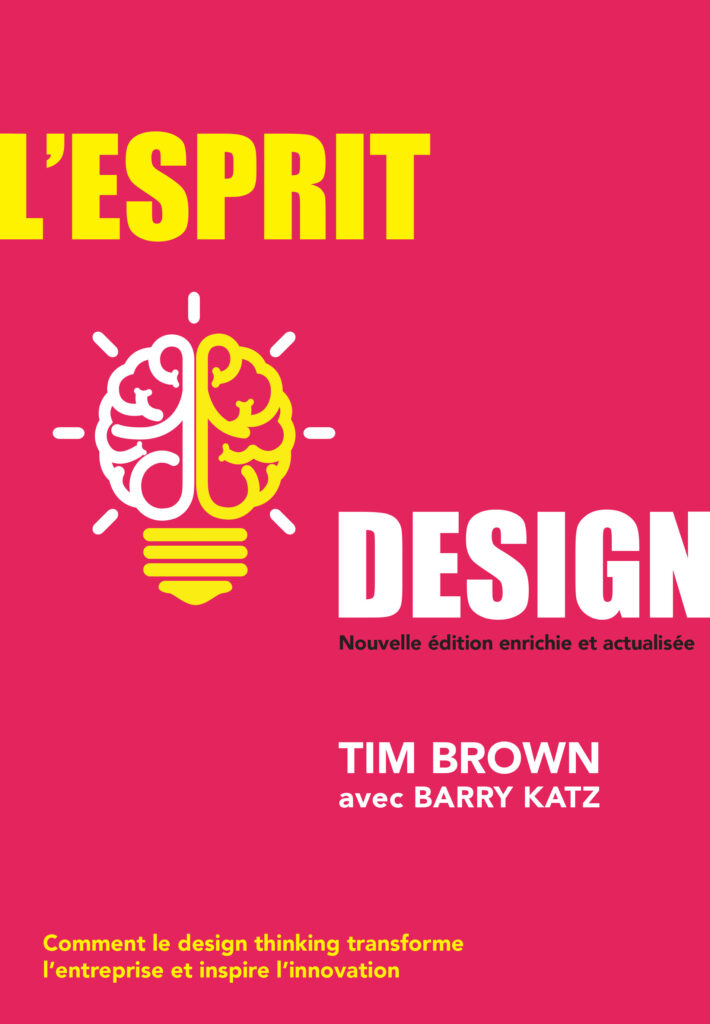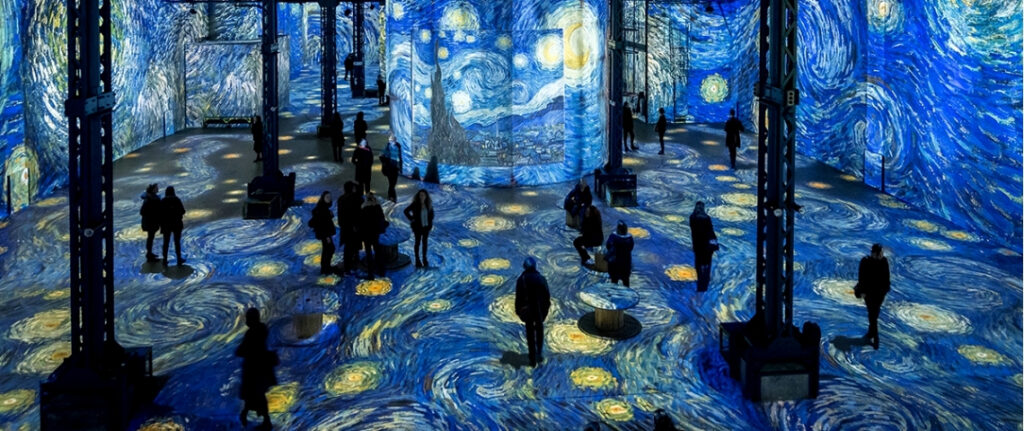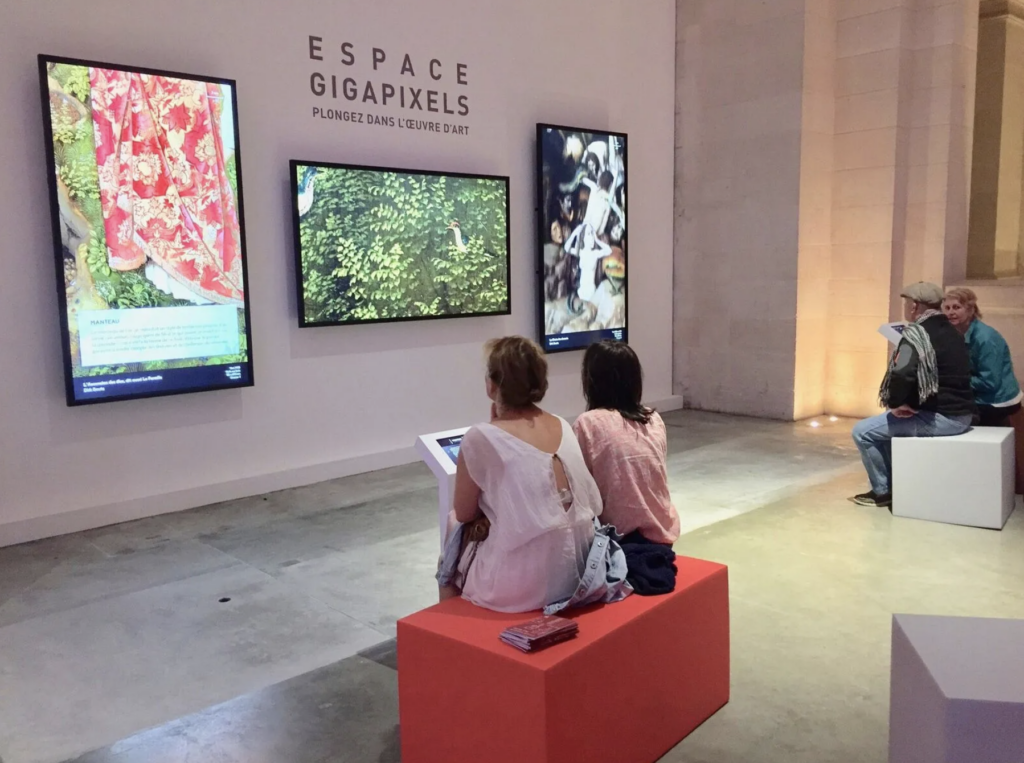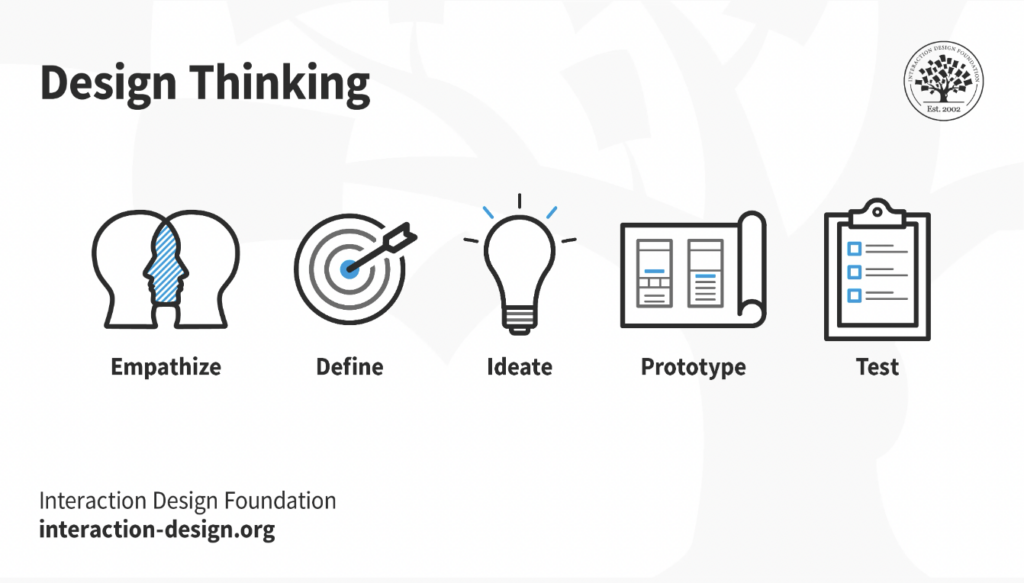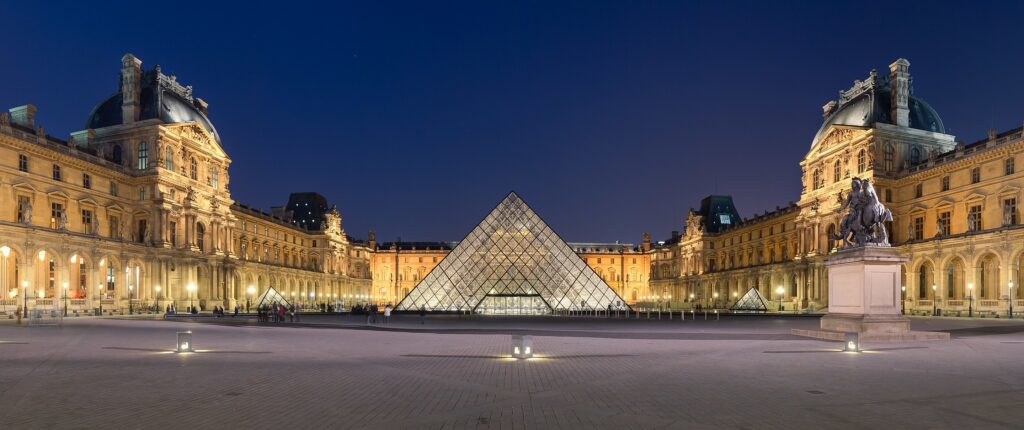
If UX Design is now a well-integrated activity within companies, this is not yet the case within cultural institutions such as museums, libraries, theaters or performance halls. This article proposes, like a manifesto, to show all the interest of UX and more generally of the methodology of Design Thinking, in the design and improvement of the digital interfaces used by these institutions.
After recalling the context in which the cultural sector takes place within UX Design and after having specified the links that exist between UX Design and the notion of cultural mediation, we will see why the meeting between these two worlds can be difficult. . Then we will end by seeing how the methodology of Design Thinking can be concretely used in the context of the museum.
UX SECTORS
UX design, and more generally Design Thinking, are recent areas of activity: it was not until the 2010s that these approaches were popularized around the world and particularly in France with the translation of the book by the famous designer Tim Brown, The design spirit. How design thinking transforms business and inspires innovation.
But the level of maturity on UX is still today very variable from one company to another. Also, there is still a lot to do to convince companies of the need to work with designers, and to prove the real added value of UX methods in the analysis, design and evaluation of the user experience of digital interfaces. .
This is all the more the case in certain sectors of activity: if the worlds of banking, industry, luxury, or even transport have largely integrated design processes within their ecosystem, this This is not the case for certain sectors such as culture, art and heritage.
Indeed, unlike traditional companies, cultural institutions in France such as museums, libraries, or performance halls rarely call on consulting companies to improve the user experience of their digital services. Internal recruitment of designers seems, for their part, almost non-existent.
Science museums, however, seem to be an exception according to Alexia Jacques Casanova : for her, "this is certainly linked to the similarity between the scientific approach and the design approach, both giving pride of place to experimentation and the right to make mistakes - two postures that are perhaps less encouraged in the places of artistic culture.
We can also cite the few rare works of cultural actors or designers who use the methods of UX Design in the context of cultural projects: the memoir of Fanny Mercadal in 2018 on the contribution of UX in the transformation of the visitor/museum relationship, the thesis of Ronan Le Guern in 2019 on the redesign of the 104 factory website, or even the work of Nicolas Béudon on the use of Design Thinking for the layout of libraries.
In reality, to see the world of culture meet that of UX Design, it is rather necessary to look at the side of innovative companies that develop digital cultural services. This is the case of the company Culture pass to cite just one example: created in 2019 by the French government to develop the culture pass mobile application, the company's teams use the Design Thinking methodology to design and improve their interfaces.
UX AND CULTURAL MEDIATION
This limited dialogue between UX design and cultural institutions seems paradoxical at first sight. Firstly because there is no shortage of digital innovations in the cultural sector: the Ministry of Culture was itself one of the first ministries to see the potential of IT in the 1980s. Today, the The institution's digital department even encourages the creation of new solutions for access to culture through digital means, in particular thanks to the call for projects Innovative Digital Services.
This is all the more paradoxical since the design of tools, especially digital ones, responds to an essential desire of cultural institutions today, that of transmitting knowledge and experience of culture to as many people as possible, for different types of audiences. In fact, what is called the cultural mediation is at the heart of the cultural project of these institutions: starting from the idea that culture belongs to everyone but that it is not naturally accessible to the public, the mediation tools make it possible to make the link between the public and culture, to ensure that culture is shared.
This mediation can take several forms: we speak of written mediation for an explanatory panel in an exhibition, oral mediation for a guided tour, or digital mediation for all the interfaces present in the spaces of a museum for example. Also, it is the role of cultural mediation, and more broadly of cultural institutions, to design mediation devices, especially digital ones. The Workshop of Lights in Paris is an emblematic example of sensory mediation using digital technology to share a sensitive experience of works of art.
Moreover, there is no shortage of commonalities between UX design and cultural mediation...
- If UX design is interested in users, cultural mediation is interested in audiences: the numerous audience studies carried out by cultural institutions, and in particular museums, bear witness to this, as does the emergence of related professions. to the public in these same institutions (responsible for cultural mediation, guide-lecturer, responsible for public development, responsible for artistic and cultural education, etc.).
- Then, if UX design is interested in the experience of users, it is indeed the objective of cultural mediation to create an experience of culture, whether intellectual and/or emotional. The museums themselves have moreover now integrated this notion of experience well from a marketing point of view, thinking both of the experience during the visit, but also of the experience before the visit (with the provision of cultural content on a website for example) and after the visit (with the purchase of derivative products on the online store for example).
- Moreover, in the same way that cultural professionals know that it is not enough to open the doors of a museum for the public to go there and navigate the exhibition spaces, designers know that it is not enough to arrange content randomly on an interface for users to be able to navigate within a system and achieve their objectives. In both cases, the user or the public need to be accompanied in their experience.
- UX design and cultural mediation are therefore very close, and one could even consider UX design, in the context of culture, as a type of cultural mediation that we could call experiential mediation. UX design would thus be designated as a digital intermediary between the public and culture insofar as UX participates, in the same way as other types of mediation, in the design of the experience of cultural content experienced by public.
REASONS FOR A LIMITED DIALOGUE BETWEEN UX AND CULTURE
If cultural institutions have largely made their digital transition and UX and cultural mediation can have many points in common as we have just seen, why is UX Design struggling to push the doors of cultural institutions? ?
First, because the desire to transmit and share culture with as many people as possible seems to be a more important objective in itself for cultural actors than the objective of building a transmission adapted to different audiences. Cultural actors seem, in the digital context, to work more on the integration of the content of which they are the holders, in the systems they want to put in place, rather than working on the expectations of the public and on the how these could guide the editorialization of content and more generally the design of interfaces.
Consequently, the methodology for designing digital devices is not the same in the context of cultural institutions and in that of UX Design. When cultural institutions will call on external service providers for the digital devices they want to set up, they will provide specifications with a list of functionalities, and will not ask themselves who these functionalities are intended for, what precise needs they meet, and will users be satisfied with their digital experience and their cultural experience, both closely linked.
It sometimes happens that cultural institutions set up Design Thinking workshops, but this type of workshop is generally considered an end in itself, as explained Alexia Jacques Casanova, as a pretext to carry out and promote a one-off event, whereas Design Thinking requires long-term work that encourages creativity.
If UX Design tries to meet an identified need, cultural mediation is confined to a global user need that stems from the policy of cultural institutions to want to share culture through different mediation tools so that audiences can learn and feel emotions. In this context, it is undoubtedly the culture of design, and more broadly digital issues, which remain to be integrated today into cultural institutions and more particularly into management and decision-making bodies.
It is still necessary that museums, theaters or libraries also have the budgets to allocate to this type of service, which seems complicated at a time of budgetary restrictions affecting the cultural sector.
It should also be noted that historically, IT has most often been outsourced to cultural institutions because it is considered a support for the main activities, which no doubt has prevented the development of a digital culture in the practices of employees there too. of these institutions.
To use the title of an article published by Les Décodeurs Associés, a network of people specializing in digital cultural mediation, "It's time to move on to UX Design". But how to do it ?
LE DESIGN THINKING AND MEDIATION
If we have been able to demonstrate so far the need to integrate the methodologies of UX Design and more generally of Design Thinking within the cultural sector, let us now see how to do it concretely. We will try to share here some ideas for all cultural actors, so that they can begin to imagine the possibilities offered by UX Design in the design and improvement of their digital devices.
Let us first recall that Design Thinking corresponds to a method, a process of innovation, a co-creation approach which makes it possible to call on collective intelligence to design innovative products or services, based on real needs. humans. This broad definition shows us that Design Thinking can be used in many contexts, to solve several types of problems.
For the museum, it could for example be used to design the circulation of visits in an exhibition space, to develop all the media for written and oral mediation (explanatory panel, guided tour, signage, activities, etc.), to put in place place specific services (a ticket office, a shop, a space for the toilets, etc.), or for other issues such as managing the queue at the entrance to the museum, or the design of digital services.

While Design Thinking is an opportunity to develop services with the users themselves, for whom these services are intended, it is also an effective way to solicit the expertise of the various professionals in the organization in which the design is carried out. innovation project. It is by organizing the confrontation of each person's points of view that the effect of working in “silos” can be overcome and the best ideas can be generated.
In the context of the museum, it is therefore a question of designing digital interfaces based on needs identified among the public, but also with the help of the many experts that can be found in such an institution: marketing officers and communication, but also curators, restorers, exhibition curators, programming managers, cultural mediators, etc.
The knowledge about the works held by the curator or curator, who is traditionally the authority in the museum space, is then no longer to be considered as an end in itself: in a more horizontal perspective, it is more a question of one of the resources made available to develop services adapted to the public, in the same way as the knowledge held by all the other experts.
The 5 stages of Design Thinking
On the other hand, in practice, the methodology of Design Thinking is characterized by 5 major steps to follow for the design or improvement of innovations.
The first step is to observe the world, to ask questions, to understand the reasoning, feelings and emotions of individuals, to observe their behavior, to understand their experience of a product or service. Nothing could be simpler for the museum institution, which is fortunate enough to be in direct and permanent contact with its audiences, among whom it will be necessary to identify the different targets. Because even if the ambition of the museum is to address the greatest number, the museum welcomes specific visitor profiles to whom it is necessary to give satisfaction.
To do this, meet your audiences, have them fill out questionnaires, ask them questions about what they think, what they feel, the way they think, their goals and expectations, their possible frustrations . Observe their behavior in relation to the services offered and in particular the digital interfaces. Do not hesitate to consult the many studies already online on the subject that interests you, on feedback.
This first step will also be an opportunity to identify the profile of the visitor you are interested in and to whom the product or service you wish to set up will be aimed: children, adolescents, neophytes, specialists, tourists, people in situation of disability… This work will allow you to avoid stereotypes and consequently to create services which are intended “for the greatest number”, and therefore, in other words, for no one.
The second step of the Design Thinking methodology, which stems from the first, allows you to precisely define the problem(s) and frustrations among your audiences that you have been able to observe. The mass of information collected during the first step will allow you to precisely analyze the problem to be solved, to then find the appropriate solution. In this regard, Albert Einstein said: "If I had an hour to solve a problem on which my life depended, I would spend the first 55 minutes looking for the best question to ask myself, and when I found it, I would just 5 minutes to answer it.
The third step consists of generating as many ideas as possible and identifying the most interesting ideas to solve the problem found in the previous step. In this way, when you improve the interface of one of your digital devices, it will not only be a question of adding a feature that seems interesting to you, but of adding a feature that meets a real need of your audiences. To do this, organize brainstorming workshops with your audiences, but also with your colleagues: everyone's points of view can only facilitate the generation of relevant ideas.
If the UX Designer is trained to organize this type of workshop, the mediators and people in charge of the public within the museums will be the best able to organize the meeting of the various experts, to think at the same time of the satisfaction of the integrated teams to the project in the design of services but also to the satisfaction of the public. In this regard, a great museum specialist, François Mairesse, himself asked this question in March 2020 during an interview : “By deploying tools such as the usage scenario, time as material, the contextualization of devices, wouldn't there be a designer-mediator profile to build? ".
The fourth and fifth step consist of making a prototype of the product you want to implement, and testing it. Also, if you wish to call on an external company to create your interfaces, do not simply ask for the implementation of functionalities within the product, also ask for the organization of tests which will be able to validate or not the relevance of your product and you allow it to be improved quickly. This will prevent you from creating a product that is not satisfactory for your audiences and that we force ourselves to keep in the space of the museum to legitimize the costs that it has requisitioned. In other words, do not hesitate to integrate the testing of your products into your budget. A few well-identified visitors will be enough to give you an idea of the elements to improve in your interfaces.
Conclusion
As you will have understood, the methods of Design Thinking and UX Design have a lot to offer the cultural sector. And at a time of increasing competition between cultural institutions and the need for them to redouble their efforts to acquire and retain audiences, UX could be considered as a solution with high added value to make the difference.
The museum in particular seems to be fertile ground for the use of this type of method, which promotes transversality, inclusivity and the creation of innovative experiences. The new definition of the museum developed by the International Council of Museums (ICOM) in the summer of 2022 testifies to this: a place “open to the public, accessible and inclusive, it encourages diversity and sustainability. Museums operate […] with the participation of diverse communities. They offer their audiences varied experiences of education, entertainment, reflection and knowledge sharing”.
Clément SERAIN, UX Designer @UX-Republic
Our next trainings
ACCESSIBLE UX/UI DESIGN # Paris
SMILE Paris
163 quay of Doctor Dervaux 92600 Asnières-sur-Seine
AWARENESS OF DIGITAL ECO-DESIGN # Belgium
UX-REPUBLIC Belgium
12 avenue de Broqueville - 1150 Woluwe-Saint-Pierre
STORYTELLING: THE ART OF CONVINCING # Paris
SMILE Paris
163 quay of Doctor Dervaux 92600 Asnières-sur-Seine
UX/UI ECO-DESIGN # Paris
SMILE Paris
163 quay of Doctor Dervaux 92600 Asnières-sur-Seine
DESIGN THINKING: CREATING INNOVATION # Belgium
UX-REPUBLIC Belgium
12 avenue de Broqueville - 1150 Woluwe-Saint-Pierre
MANAGING AND MEASURING UX # Paris
SMILE Paris
163 quay of Doctor Dervaux 92600 Asnières-sur-Seine
DESIGN SPRINT: INITIATION & FACILITATION # Paris
SMILE Paris
163 quay of Doctor Dervaux 92600 Asnières-sur-Seine
UX-DESIGN: THE FUNDAMENTALS # Belgium
UX-REPUBLIC Belgium
12 avenue de Broqueville - 1150 Woluwe-Saint-Pierre
